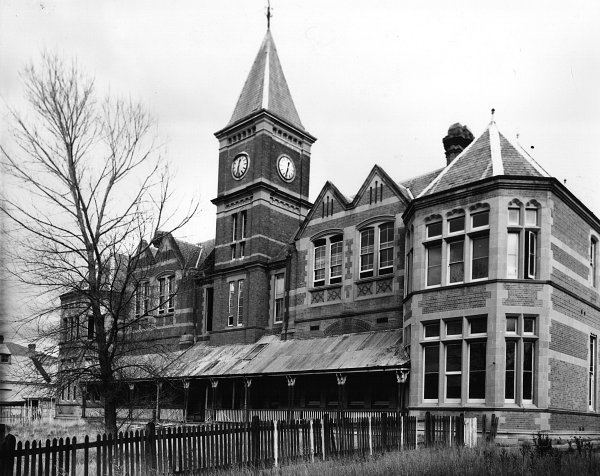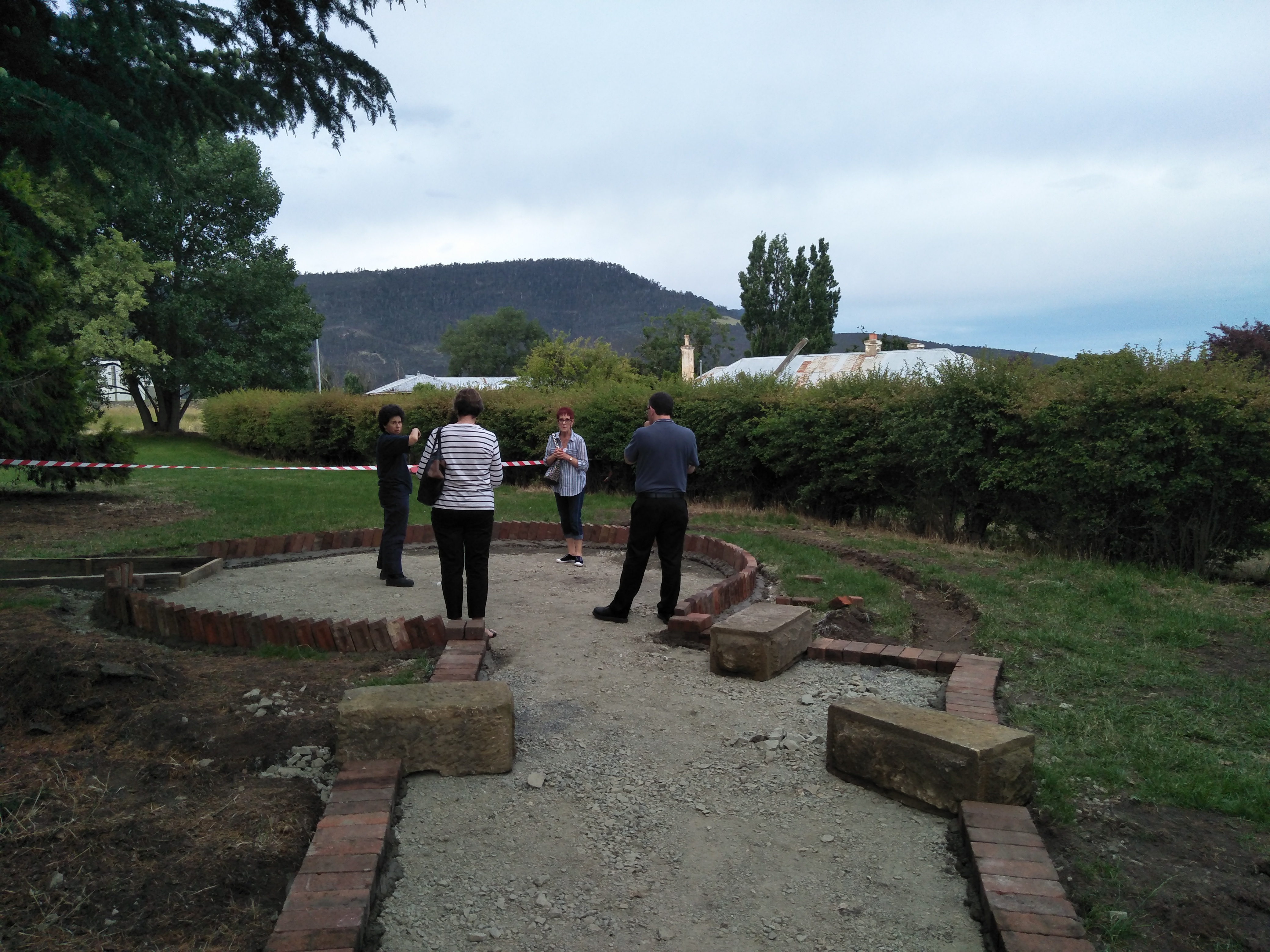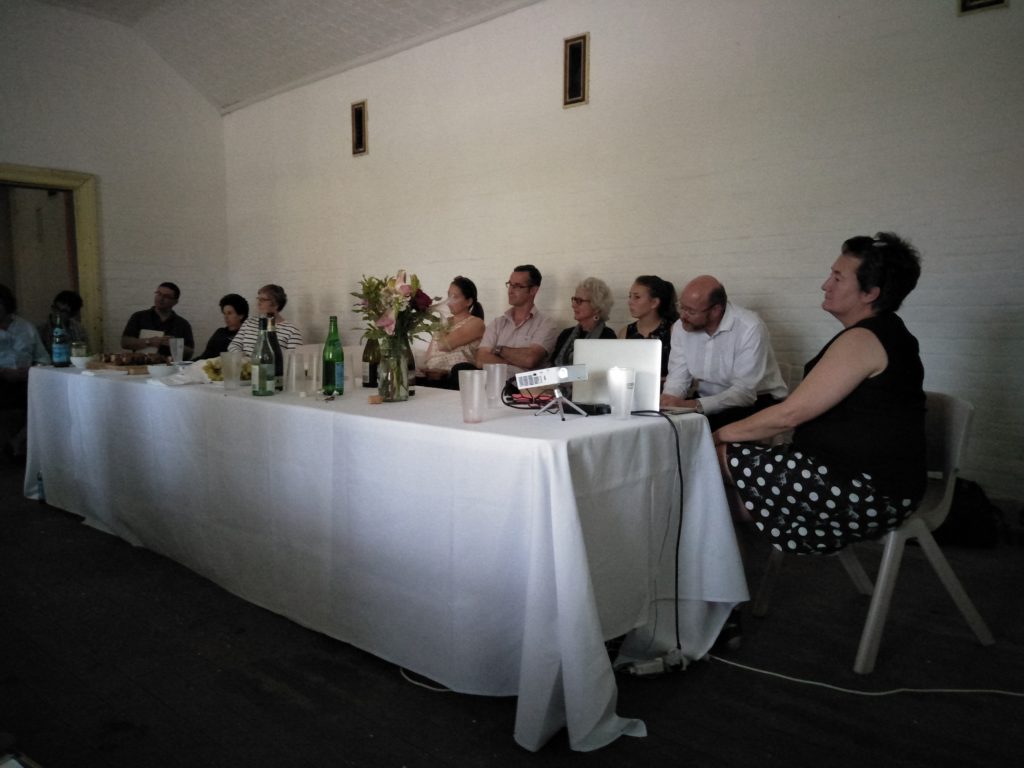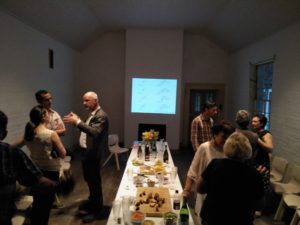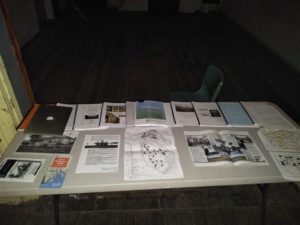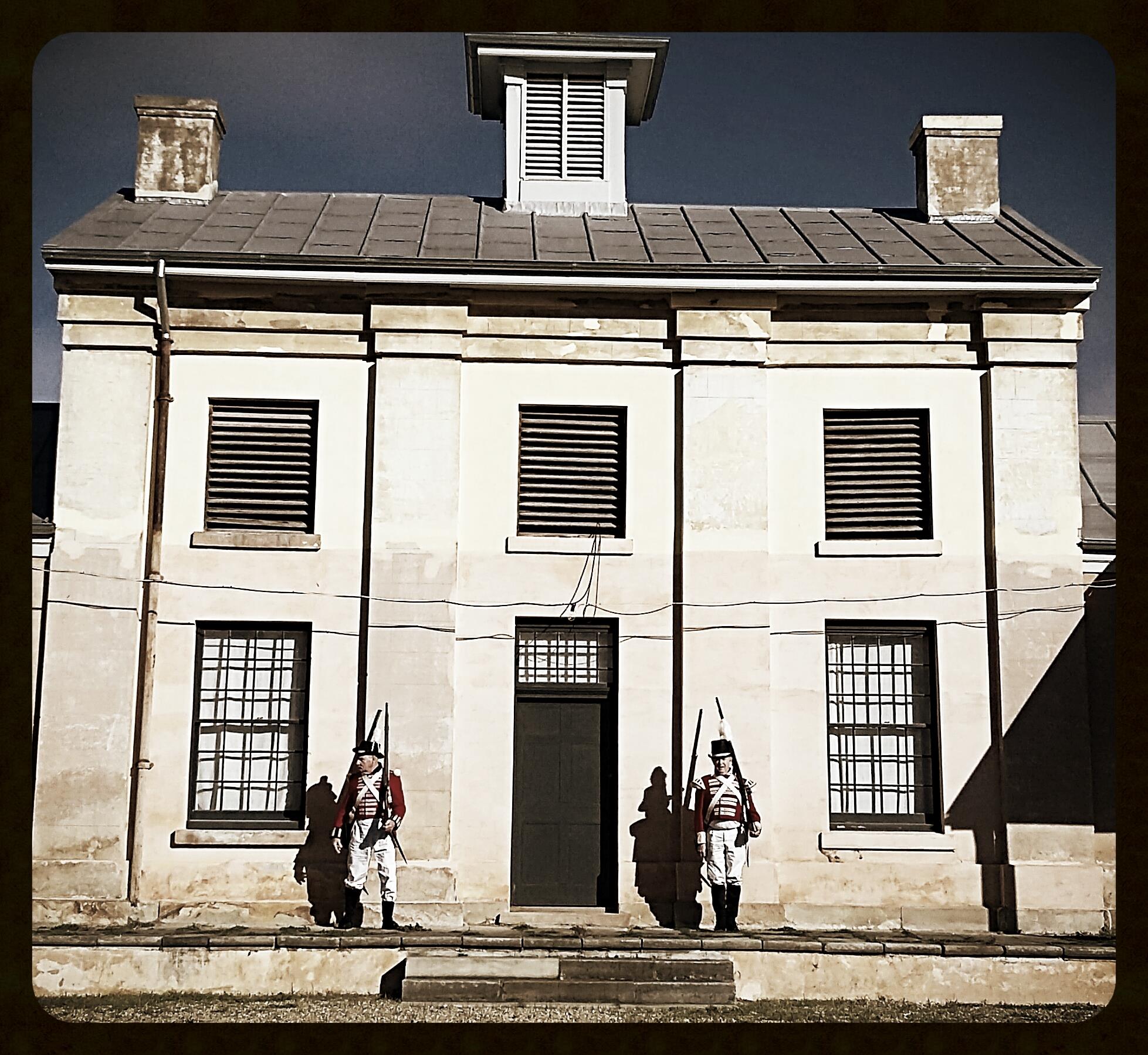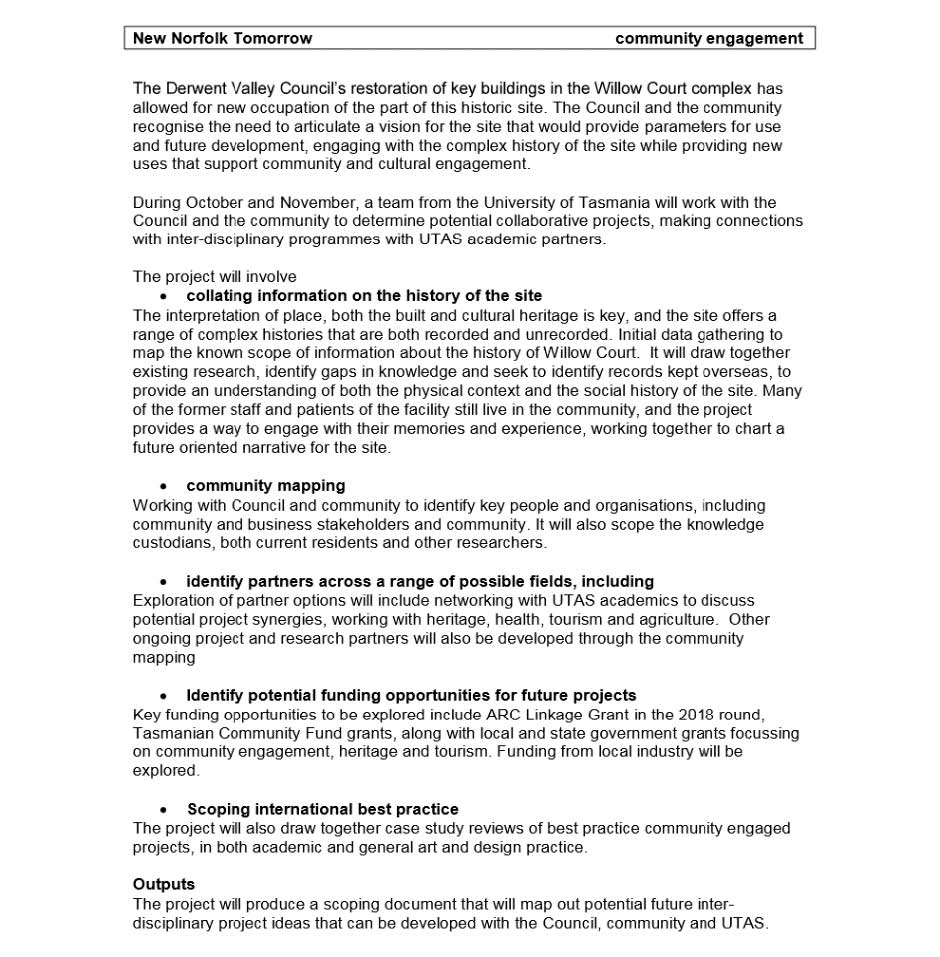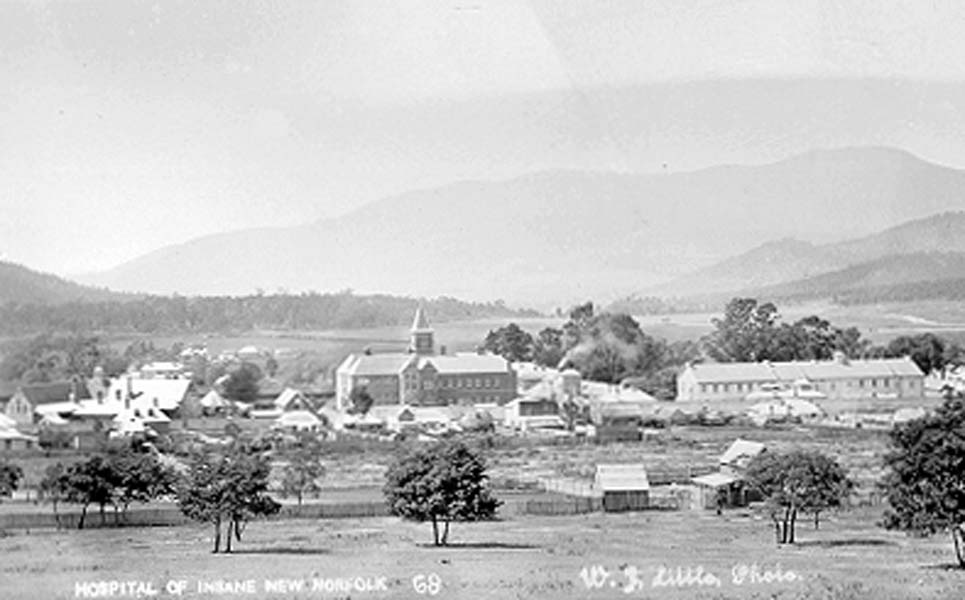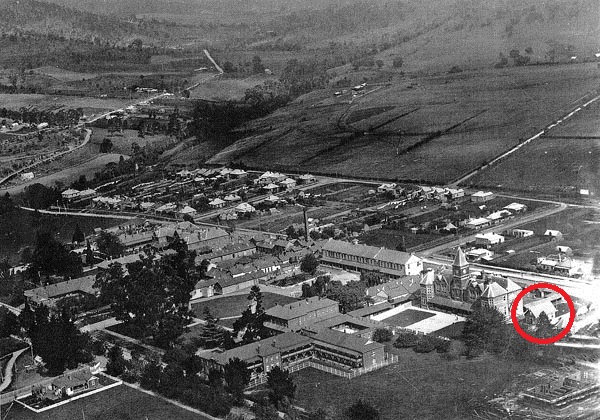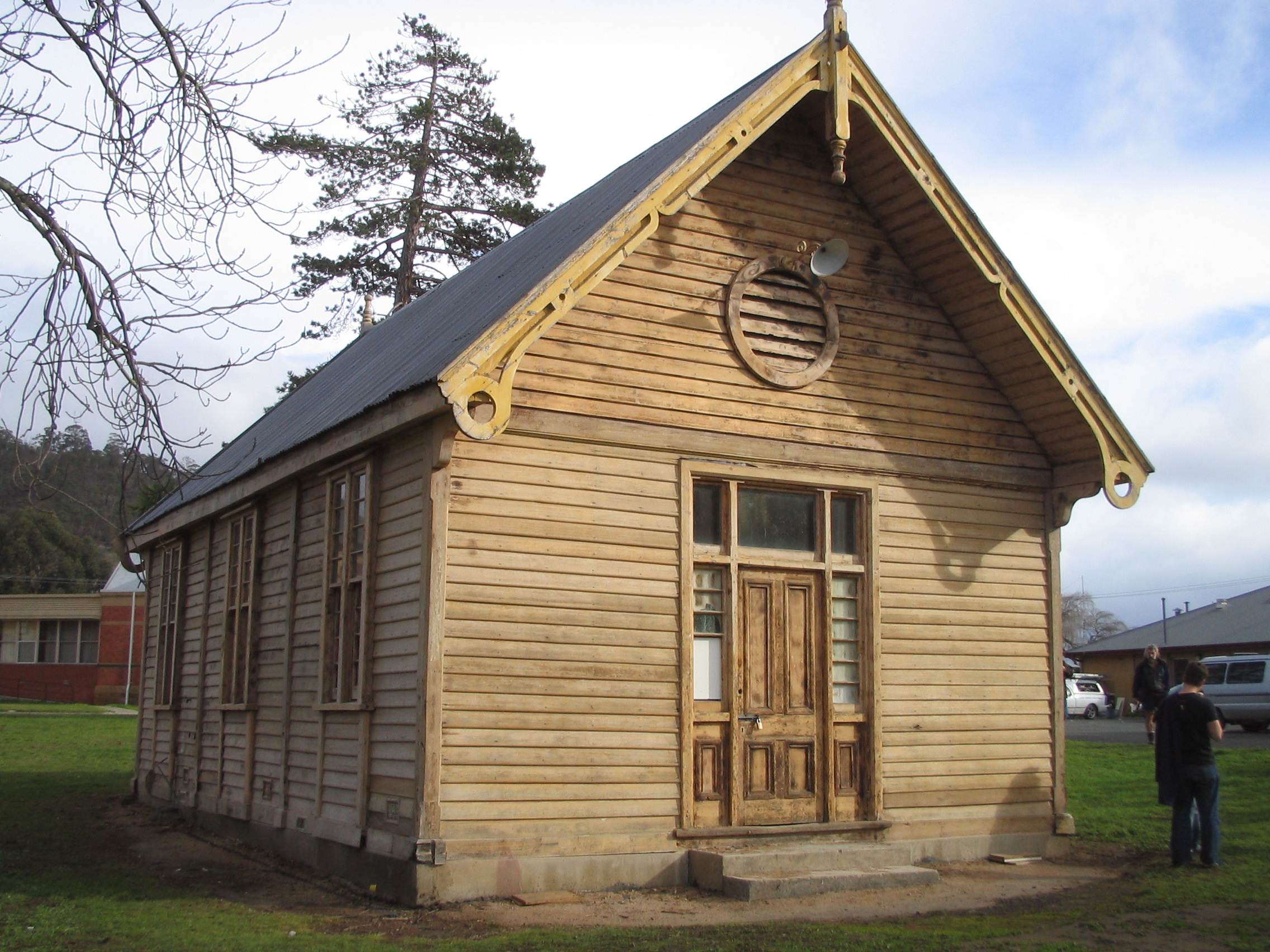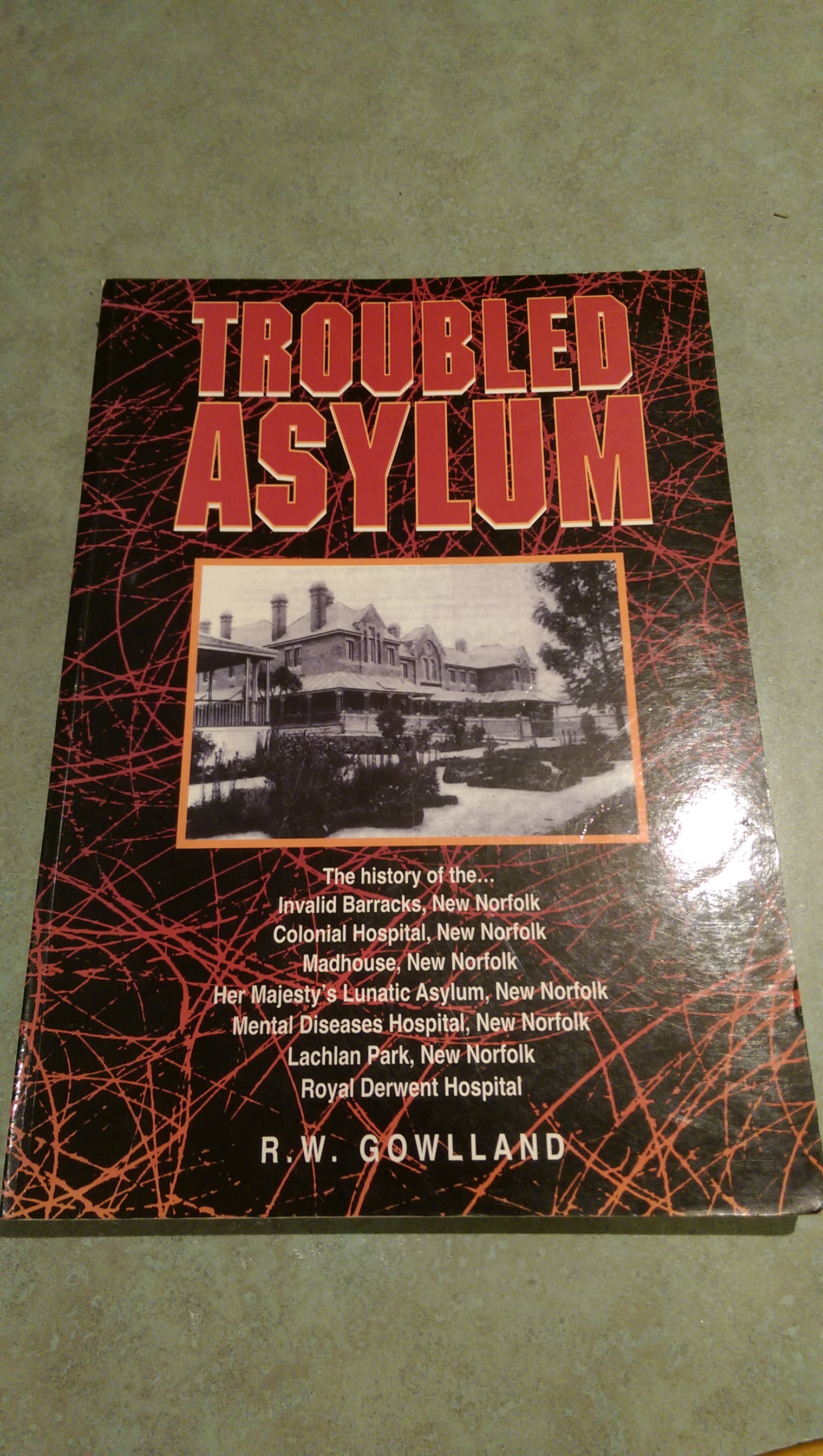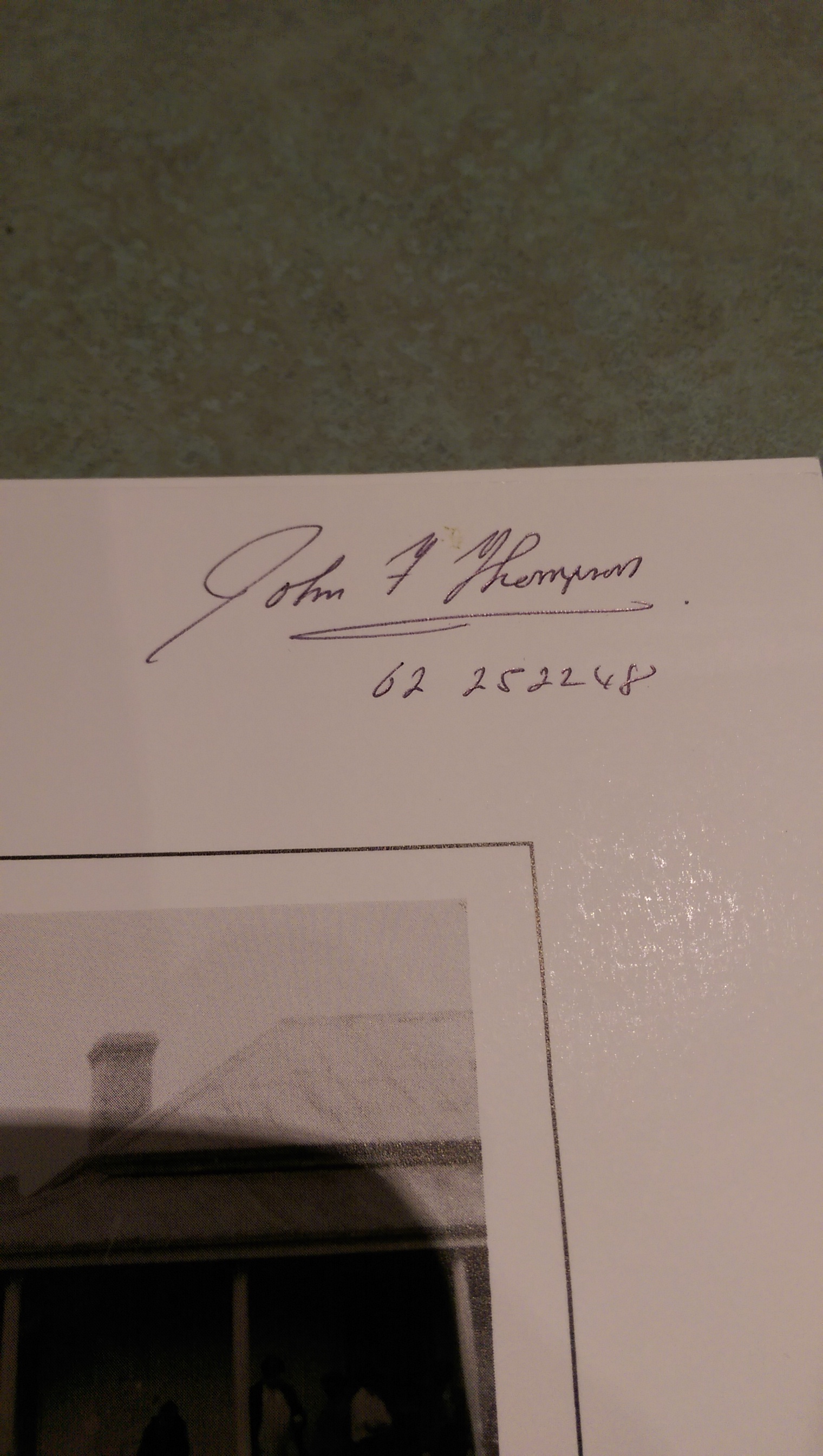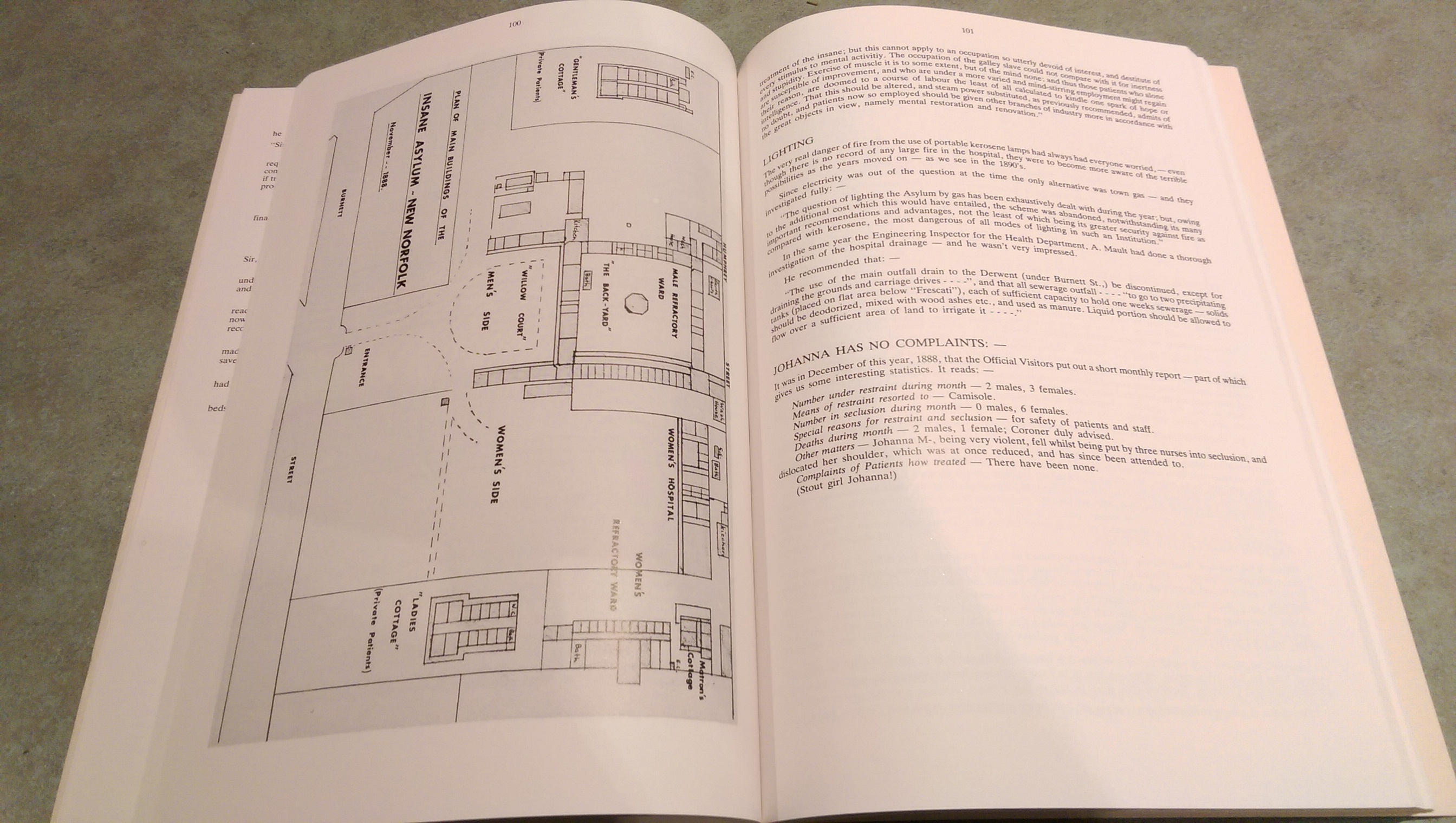The long awaited Expression Of Interest (EOI) concept for the sale or lease of Willow Court was announced nearly three years ago (March 2015) and on the 30.12.2017 I was sent an email from Cr Bester stating;
The Council recently approved the release of an Expression of Interest document… he goes on to state that no EOI have been supplied for the group of Councillor to view.
The last part of the statement is interesting seeing that the final document has not been issued! Telling the public that the process is advanced and that they are waiting for EOI is “Fake News”.

This has been the Council’s prefered option to deal with the publicly owned Heritage Site that they currently are the Custodians. I was keen to understand the context that was going to be part of the decision making process around the lease or sale of our Tasmanian Heritage Site, so I wrote to the Derwent Valley Council to:
- Ask for the Expression of interest documentation and,
- To have supplied, any related documentation around any decisions around the type of use for the site. (ethics)
I think it is important that the Council, who are the current Custodians of the site, explain the context by which they are going to sell or lease the site and what sort of activities they are ethically bound by heritage and by their own collective thoughts to allow on the site. At this stage we have only heard from a small number of individual Councillors who have had a range of personal opinions, but nothing in writing from them as a collective.
I believe that our Tasmanian Heritage needs the utmost consideration when a public entity such as the State Government or a Local Government body decide to offer our Heritage for sale to private enterprise.
I have floated the concept at meetings that without a guiding document around this the Council could well sell the site for a theme park. While most Councillors reject this notion, without some guiding document, what I suggest could become a reality.
At the last Council meeting (December) a member of the public asked a question of the Council and in doing so stated that the Oval Wards (D, E, F, G) and land were sold for $43,500 while an offer of $200,000 sat on the table. It is important to note that no Councillors choose to confirm or deny the figures announced by the member of the public and the context of the sale was not mentioned.
I received an email back from the The Executive Assistant, Melinda Pearce which appears to contradict the announcement made earlier about the release of the document itself.
“I can confirm that an EOI has not been publicly released yet”
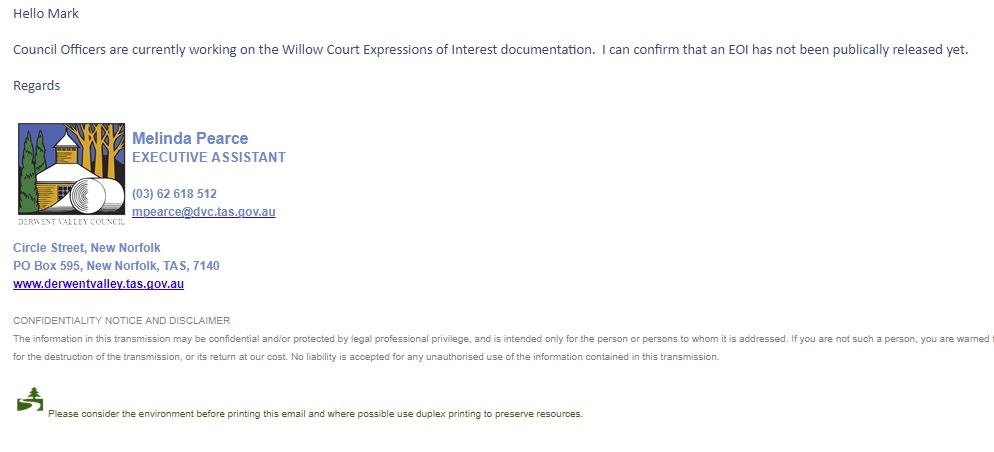
So as a Tasmanian interested in Tasmanian Heritage, in particular Willow Court, I am left confused by these contradictory statements. Does this Council know what it is doing with this process? I would suggest that clearly there are issues with the system that has already taken nearly three years to produce the EOI and clearly there are issue between Councillors about the actual release.
We can only wait to see what ethical boundaries they have placed on any interested party who wishes to use the site which they are the Tasmanian Custodians!
